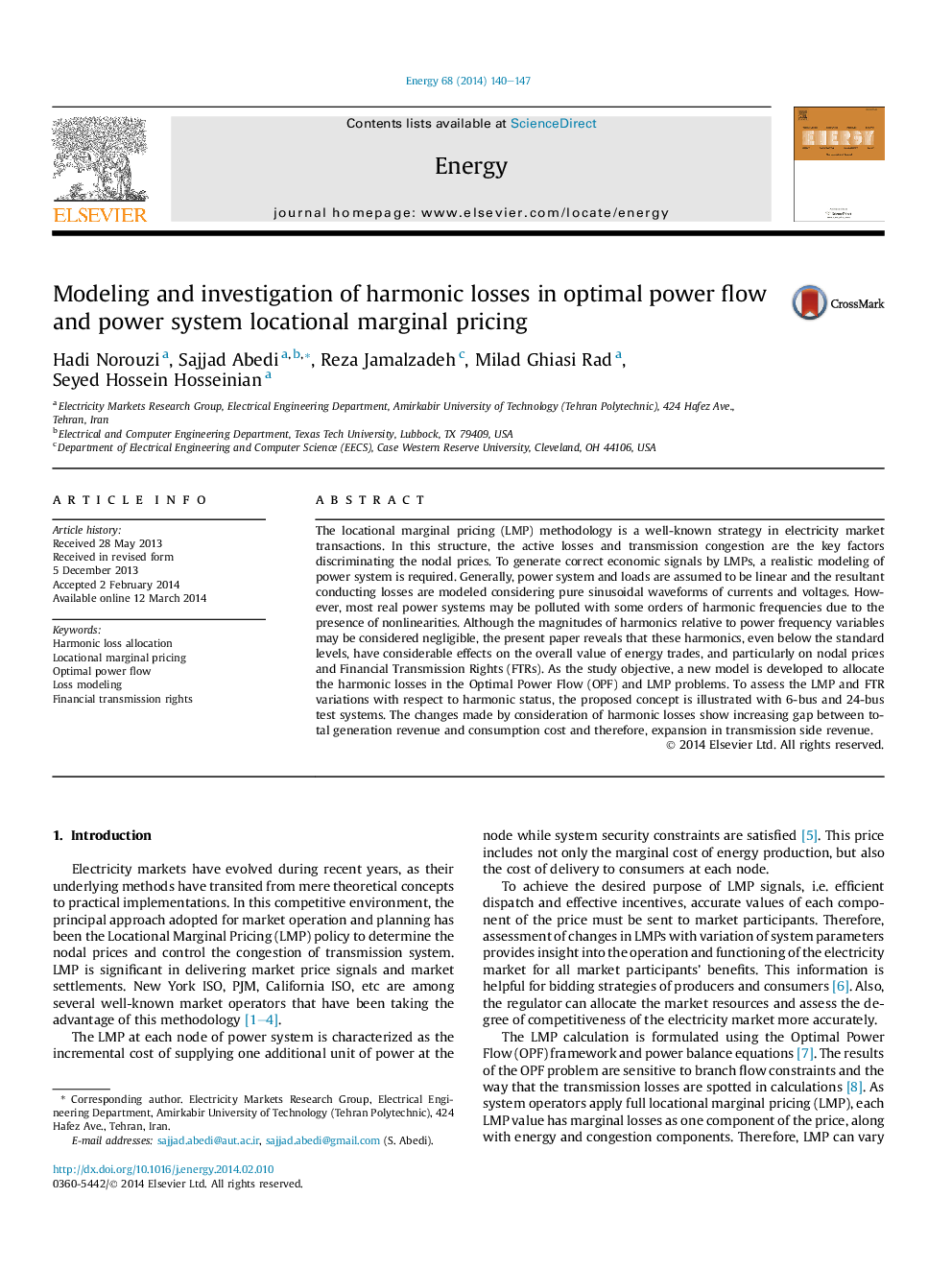| Article ID | Journal | Published Year | Pages | File Type |
|---|---|---|---|---|
| 8077960 | Energy | 2014 | 8 Pages |
Abstract
The locational marginal pricing (LMP) methodology is a well-known strategy in electricity market transactions. In this structure, the active losses and transmission congestion are the key factors discriminating the nodal prices. To generate correct economic signals by LMPs, a realistic modeling of power system is required. Generally, power system and loads are assumed to be linear and the resultant conducting losses are modeled considering pure sinusoidal waveforms of currents and voltages. However, most real power systems may be polluted with some orders of harmonic frequencies due to the presence of nonlinearities. Although the magnitudes of harmonics relative to power frequency variables may be considered negligible, the present paper reveals that these harmonics, even below the standard levels, have considerable effects on the overall value of energy trades, and particularly on nodal prices and Financial Transmission Rights (FTRs). As the study objective, a new model is developed to allocate the harmonic losses in the Optimal Power Flow (OPF) and LMP problems. To assess the LMP and FTR variations with respect to harmonic status, the proposed concept is illustrated with 6-bus and 24-bus test systems. The changes made by consideration of harmonic losses show increasing gap between total generation revenue and consumption cost and therefore, expansion in transmission side revenue.
Related Topics
Physical Sciences and Engineering
Energy
Energy (General)
Authors
Hadi Norouzi, Sajjad Abedi, Reza Jamalzadeh, Milad Ghiasi Rad, Seyed Hossein Hosseinian,
